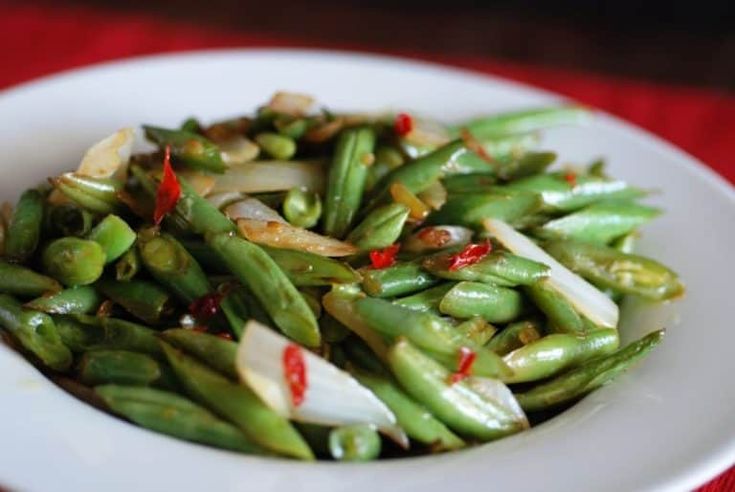1 Delicious Burkina Faso French Green Beans. Burkina Faso, a West African nation, boasts a delicious cuisine known for hearty stews and bold flavors. But a surprising element graces their markets and tables: French green beans. These aren’t your average green beans, though. They represent a fascinating blend of colonial influence and local adaptation, offering a delightful glimpse into Burkina Faso’s unique food culture.
The story begins during French colonial rule in the early 1900s. French missionaries and administrators brought these green beans, seeking a taste of home. But their motives went deeper. They viewed French vegetable gardening as a way to “civilize” the locals, introducing European practices and supposedly improving their diet. While ethnocentric, this move inadvertently introduced a versatile new vegetable to Burkina Faso.
Despite colonial intentions, French green beans weren’t immediately embraced as a staple. Burkina Faso’s traditional cuisine relies on hearty starches like millet and sorghum, often paired with stews featuring black-eyed peas, okra, and leafy greens. However, the delicate flavor and ease of growing these green beans gradually won over local palates. Farmers found them well-suited to the dry season, when other vegetables struggle.
Initially, there was a strong push to export Burkina Faso French green beans. Their slender form and vibrant color appealed to European markets, offering potential income for local farmers. However, logistical challenges like maintaining freshness during airfreight and fluctuating market demands often hindered these ambitions. While exports continue to a limited extent, most Burkina Faso French green beans find their way straight to local tables.
The Burkina Faso approach to French green beans is one of simplicity and elegance. Unlike elaborate French preparations with butter and cream, the Burkinabe method highlights the inherent sweetness and crispness of the vegetable. A typical dish might involve a quick saute with chopped onions, tomatoes, and a touch of chili pepper for heat. Garlic, ginger, and sometimes fermented locust beans called soumbala add depth of flavor. The key is to maintain a slight crispness, ensuring the beans retain their vibrant color and enjoyable texture.
French green beans aren’t just relegated to side dishes. They can be chopped and incorporated into stews, adding textural contrast and a fresh pop of green. They can also be featured in “maafe,” a rich peanut stew ubiquitous in West Africa. The beans add a subtle sweetness and a balancing freshness to the nutty and savory flavors of the dish.
Burkina Faso French green beans embody the dynamic nature of West African cuisine. They represent a successful adaptation of colonial influence, seamlessly integrated into the local culinary repertoire. Their presence speaks to Burkina Faso’s willingness to embrace new ingredients while remaining firmly rooted in its own rich culinary heritage. These green beans are a testament to the adaptability and creativity of Burkina Faso’s cooks, offering a delicious and healthy addition to the country’s vibrant food scene.

1 Delicious Burkina Faso French Green Beans
Description
1 Delicious Burkina Faso French Green Beans. Burkina Faso, a West African nation, boasts a delicious cuisine known for hearty stews and bold flavors. But a surprising element graces their markets and tables: French green beans. These aren't your average green beans, though. They represent a fascinating blend of colonial influence and local adaptation, offering a delightful glimpse into Burkina Faso's unique food culture.
The story begins during French colonial rule in the early 1900s. French missionaries and administrators brought these green beans, seeking a taste of home. But their motives went deeper. They viewed French vegetable gardening as a way to "civilize" the locals, introducing European practices and supposedly improving their diet. While ethnocentric, this move inadvertently introduced a versatile new vegetable to Burkina Faso.
Despite colonial intentions, French green beans weren't immediately embraced as a staple. Burkina Faso's traditional cuisine relies on hearty starches like millet and sorghum, often paired with stews featuring black-eyed peas, okra, and leafy greens. However, the delicate flavor and ease of growing these green beans gradually won over local palates. Farmers found them well-suited to the dry season, when other vegetables struggle.
Initially, there was a strong push to export Burkina Faso French green beans. Their slender form and vibrant color appealed to European markets, offering potential income for local farmers. However, logistical challenges like maintaining freshness during airfreight and fluctuating market demands often hindered these ambitions. While exports continue to a limited extent, most Burkina Faso French green beans find their way straight to local tables.
The Burkina Faso approach to French green beans is one of simplicity and elegance. Unlike elaborate French preparations with butter and cream, the Burkinabe method highlights the inherent sweetness and crispness of the vegetable. A typical dish might involve a quick saute with chopped onions, tomatoes, and a touch of chili pepper for heat. Garlic, ginger, and sometimes fermented locust beans called soumbala add depth of flavor. The key is to maintain a slight crispness, ensuring the beans retain their vibrant color and enjoyable texture.
French green beans aren't just relegated to side dishes. They can be chopped and incorporated into stews, adding textural contrast and a fresh pop of green. They can also be featured in "maafe," a rich peanut stew ubiquitous in West Africa. The beans add a subtle sweetness and a balancing freshness to the nutty and savory flavors of the dish.
Burkina Faso French green beans embody the dynamic nature of West African cuisine. They represent a successful adaptation of colonial influence, seamlessly integrated into the local culinary repertoire. Their presence speaks to Burkina Faso's willingness to embrace new ingredients while remaining firmly rooted in its own rich culinary heritage. These green beans are a testament to the adaptability and creativity of Burkina Faso's cooks, offering a delicious and healthy addition to the country's vibrant food scene.
Ingredients
Instructions
-
Sauté the chopped white onion in oil until softened and translucent.
-
Heat oil in a pan and cook the white onion until it becomes see-through.
-
Once the oil is hot, add the white onion and cook it until it turns slightly clear.
-
Throw in all the remaining ingredients and cook until the green beans are tender-crisp.
-
Add everything else to the pan and cook together until the beans are soft enough to eat. Season with salt, and enjoy!


